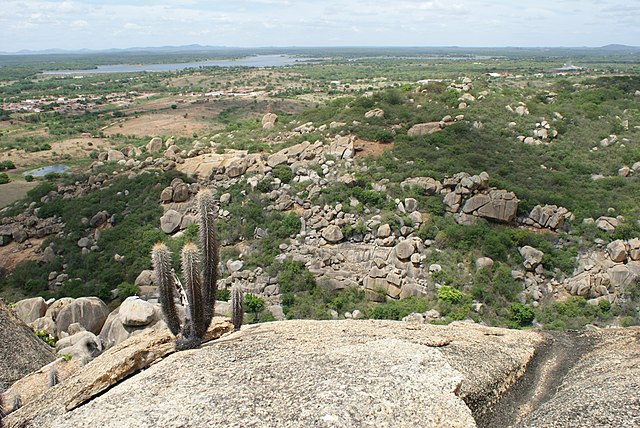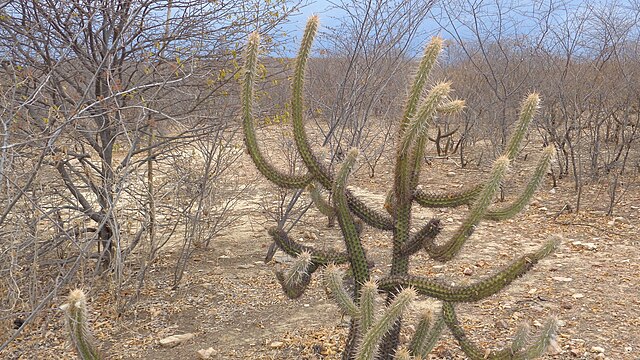Caatinga is a type of semi-arid tropical vegetation, and an ecoregion characterized by this vegetation in interior northeastern Brazil. The name "Caatinga" is a Tupi word meaning "white forest" or "white vegetation" .
The Caatinga is a xeric shrubland and thorn forest, which consists primarily of small, thorny trees that shed their leaves seasonally. Cacti, thick-stemmed plants, thorny brush, and arid-adapted grasses make up the ground layer. Most vegetation experiences a brief burst of activity during the three-month long rainy season.
Caatinga
Chapada Diamantina in Bahia state, in Brazil
Common rock formations in the caatinga, during the rainy season.
Brazilian soldiers training in the caatinga.
The sertão is the "hinterland" or "backcountry" of Brazil. The word refers both to one of the four sub-regions of the Northeast Region of Brazil or the hinterlands of the country in general. Northeast Brazil is largely covered in a scrubby upland forest called caatingas, from the Tupi language, meaning white forest, since leaves fall during dry season, donning all vegetation, mainly bushes and small trees, now reduced to bare branches and trunks, in its characteristic very light grayish, or off-white, hues. Its borders are not precise. Due to lengthy and unpredictable droughts it is an economically poor region that is well known in Brazilian culture, with a rich history and folklore. The sertão is also detailed within the famous book of Brazilian literature Os Sertões, which was written by the Brazilian author Euclides da Cunha.
Sertão
Sertão in the Grande Sertão Veredas National Park
Rainbow at Brazilian Sertão (desert). Cícero Dantas, Bahia, Brazil.
The Sertão (desert) of Brazil








